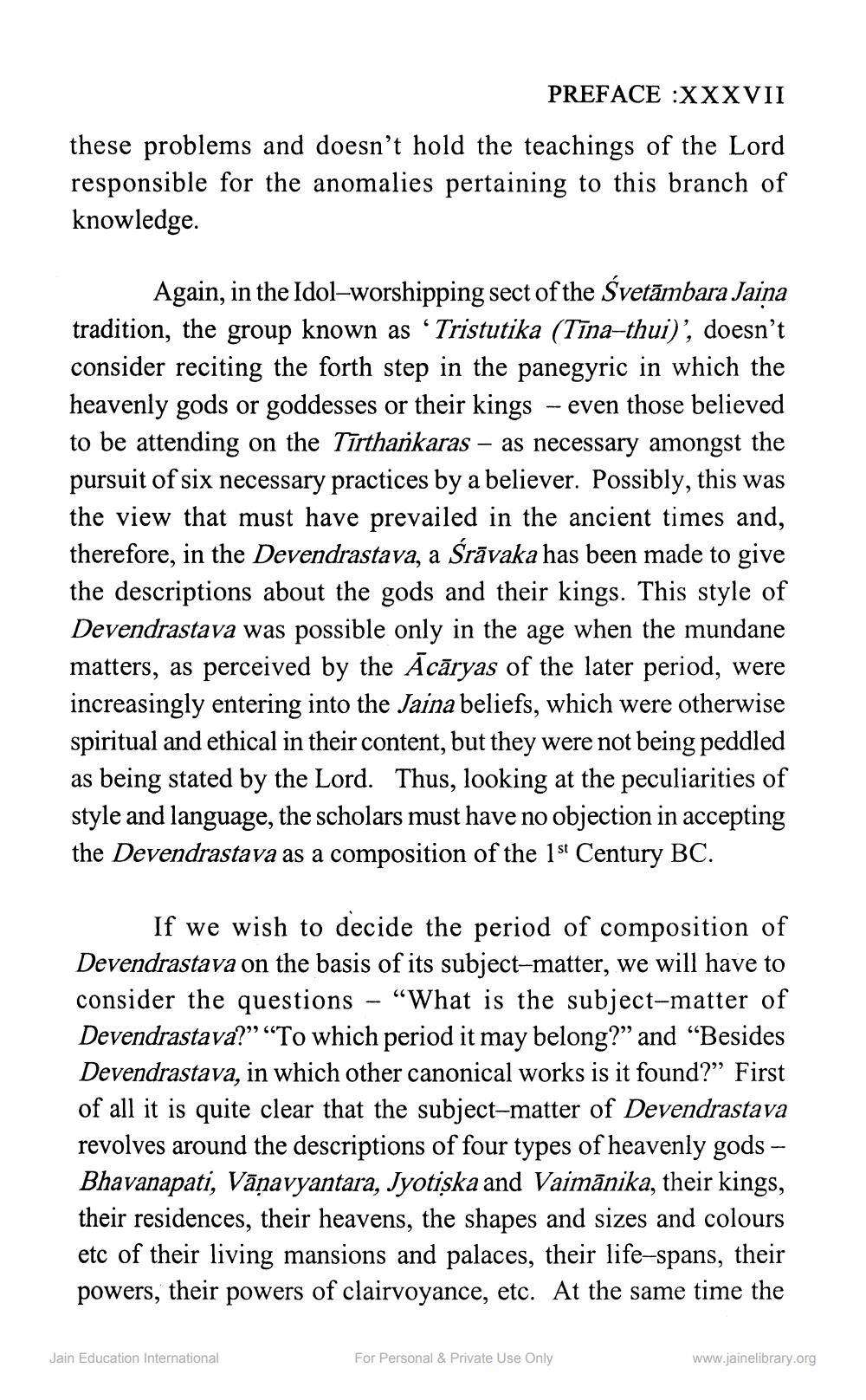________________
PREFACE :XXXVII
these problems and doesn't hold the teachings of the Lord responsible for the anomalies pertaining to this branch of knowledge.
Again, in the Idol-worshipping sect of the Svetāmbara Jaina tradition, the group known as 'Tristutika (Tīna-thui)', doesn't consider reciting the forth step in the panegyric in which the heavenly gods or goddesses or their kings - even those believed to be attending on the Tīrtharikaras – as necessary amongst the pursuit of six necessary practices by a believer. Possibly, this was the view that must have prevailed in the ancient times and, therefore, in the Devendrastava, a Srāvaka has been made to give the descriptions about the gods and their kings. This style of Devendrastava was possible only in the age when the mundane matters, as perceived by the Ācāryas of the later period, were increasingly entering into the Jaina beliefs, which were otherwise spiritual and ethical in their content, but they were not being peddled as being stated by the Lord. Thus, looking at the peculiarities of style and language, the scholars must have no objection in accepting the Devendrastava as a composition of the 1st Century BC.
If we wish to decide the period of composition of Devendrastava on the basis of its subject-matter, we will have to consider the questions – “What is the subject-matter of Devendrastava?” “To which period it may belong?” and “Besides Devendrastava, in which other canonical works is it found?” First of all it is quite clear that the subject-matter of Devendrastava revolves around the descriptions of four types of heavenly gods - Bhavanapati, Vāņavyantara, Jyotiska and Vaimānika, their kings, their residences, their heavens, the shapes and sizes and colours etc of their living mansions and palaces, their life-spans, their powers, their powers of clairvoyance, etc. At the same time the
Jain Education International
For Personal & Private Use Only
www.jainelibrary.org




